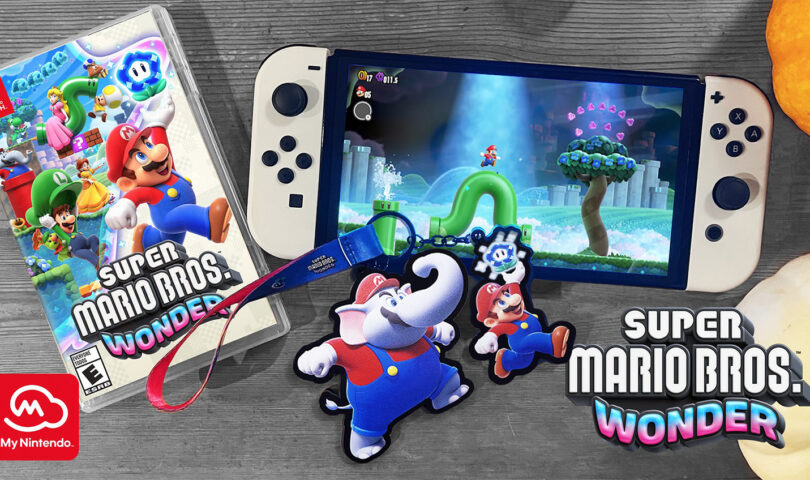“Super Mario Bros. Wonder” is finally here, and the praise the game has garnered is well-deserved, to say the least.
In many ways, the game is a total reboot of the 2D “Mario” series, being the first mainline installment in over 10 years. The mid 2000’s to early 2010s were marked by the “New Super Mario Bros.” line of games, which began as a refreshing take on the classic games but quickly turned into an uninspired and homogenized attempt at a cash-grab for Nintendo by the 3DS and Wii U entries.
With a decade of no new 2D “Mario” games, fans wondered if the beloved plumber would ever see a side-scroller again. “Wonder” puts an end to these fears while taking the series in a new direction.
Content-wise, “Wonder” is beaming with ideas and creativity.
The most noticeable of the game’s refreshing changes comes from the art style. “Wonder” opts for a cartoonish and whimsical style in its design, and this is a welcome change to the series’ previous hackneyed graphics. Even Mario himself looks different, and his animations are likely a nod to the floatiness of his sprite in the original games from the ‘80s and ‘90s.
Another key difference from the prior few entries is the game’s sound effects. They are consistent with the cartoony style, featuring a drum roll and cymbal crash when the player does a ground-pound move. The classic sound effect for entering a pipe is now distant and drenched in reverb, and even the jumping sound is different.
To nobody’s surprise, the game’s music is also a home-run as classic “Mario” composer Koji Kondo was involved. The tracks are catchy and new while paying homage to some of the original games’ music, such as the underwater music being in waltz-time and the underground theme keeping the same three note motif as that of the original “Super Mario Bros.” The latter in particular is a standout track with its darker, eerie tone.
Content-wise, “Wonder” is beaming with ideas and creativity. New abilities like the elephant power-up are fun and do the job, but the player can also acquire badges throughout the game, which act as power-ups in their own right. The badges and the player’s ability to swap them out based on their play-style make gameplay unique and dynamic.
“Wonder” offers a ton of playable characters and, of course, local multiplayer. Players can also connect to the internet and play with others online.
Another welcome change is the removal of the player’s time and score on the top of the screen, which had in recent years been reduced to vestigial relics of arcade games of the 80s. These elements are not missed and their absence allows for the game to focus on other more interesting gameplay aspects.
Level design in “Wonder” is another high point. Each level has its own unique design concept, usually centered around an enemy or some type of platforming mechanic. The concept is introduced to the player early on and continues throughout the entire level. When the player grabs the level’s wonder flower, a power-up that presents the player with a short challenge, it usually flips the concept on its head with a twist. This is a fantastic design because it makes no two levels feel alike.
While all of these new features and elements are fantastic, “Wonder” is not without its areas that don’t reach their full potential.
A greater emphasis on exploration and finding secrets within the level is much needed. There are moments when talking flowers will give the player hints towards secrets in levels, such as one saying “Feel like you’re missing something?” in the level “Swamp Pipe Crawl” if the player misses a small puzzle to get the level’s wonder flower. The player naturally desires to explore and find secrets, and these hints take away from that.
Additionally, while the wonder flower sequences are usually well-made and engaging, there are times when the challenge seems completely unrelated to the level’s design concept and feels thrown together. These flowers are also often in plain sight, which gives the player no sense of accomplishment and feels infantilizing at times.
Despite a few shortcomings, “Wonder” is an inspired and ingenious game which is exactly what the 2D “Mario” series needed.
4/5 stars
jlaforg2@ramapo.edu
Featured photo courtesy of @NintendoAmerica, X





